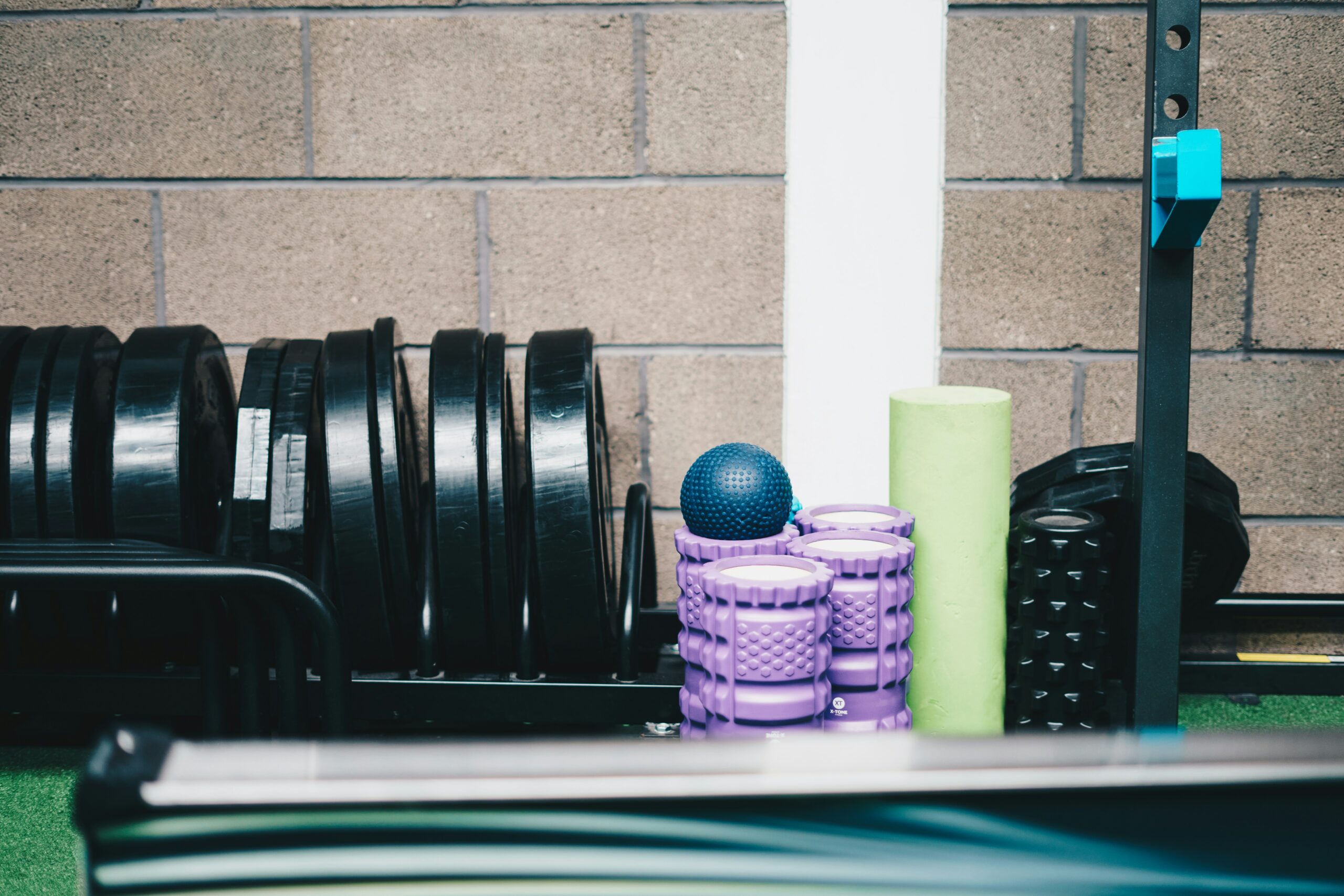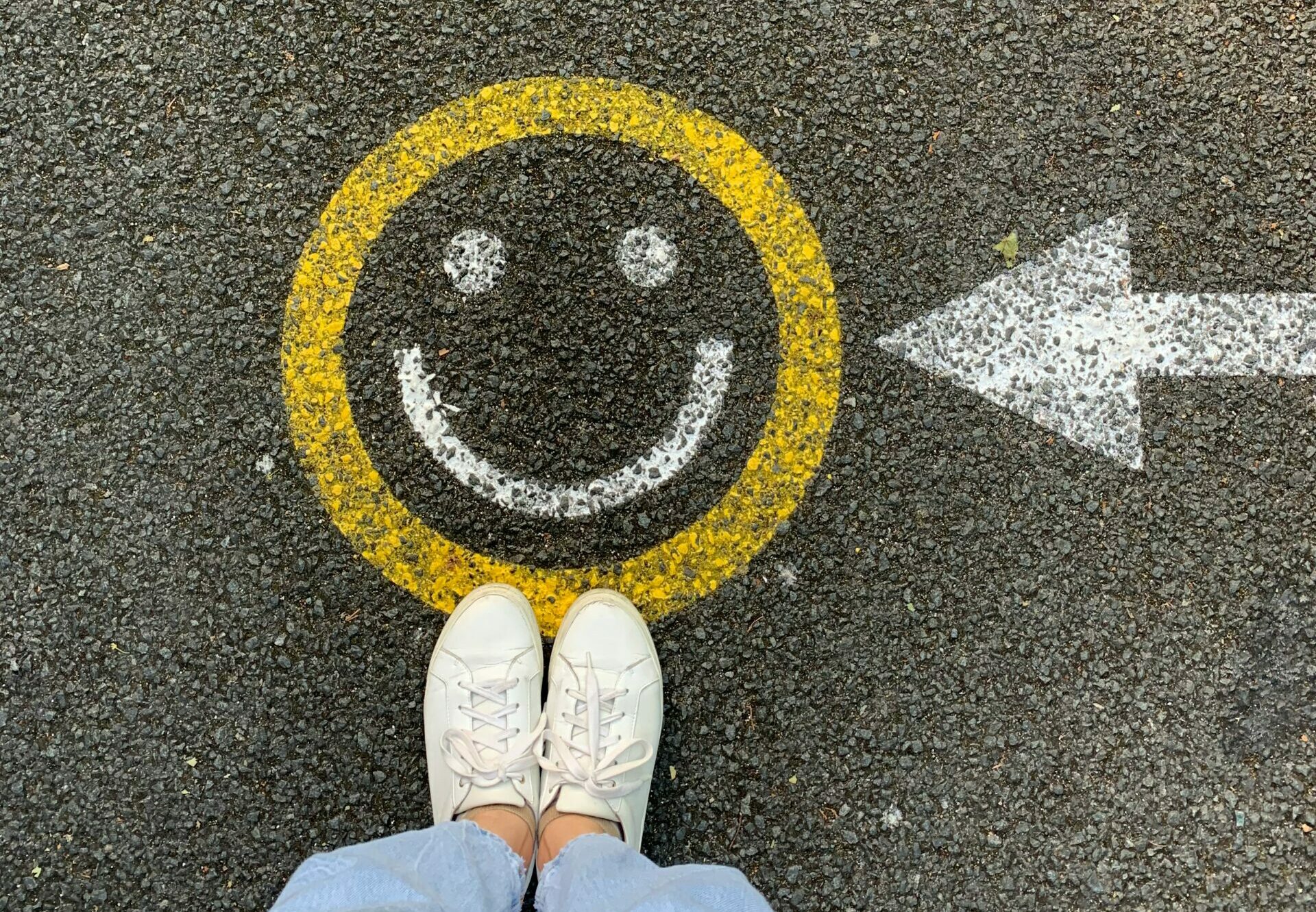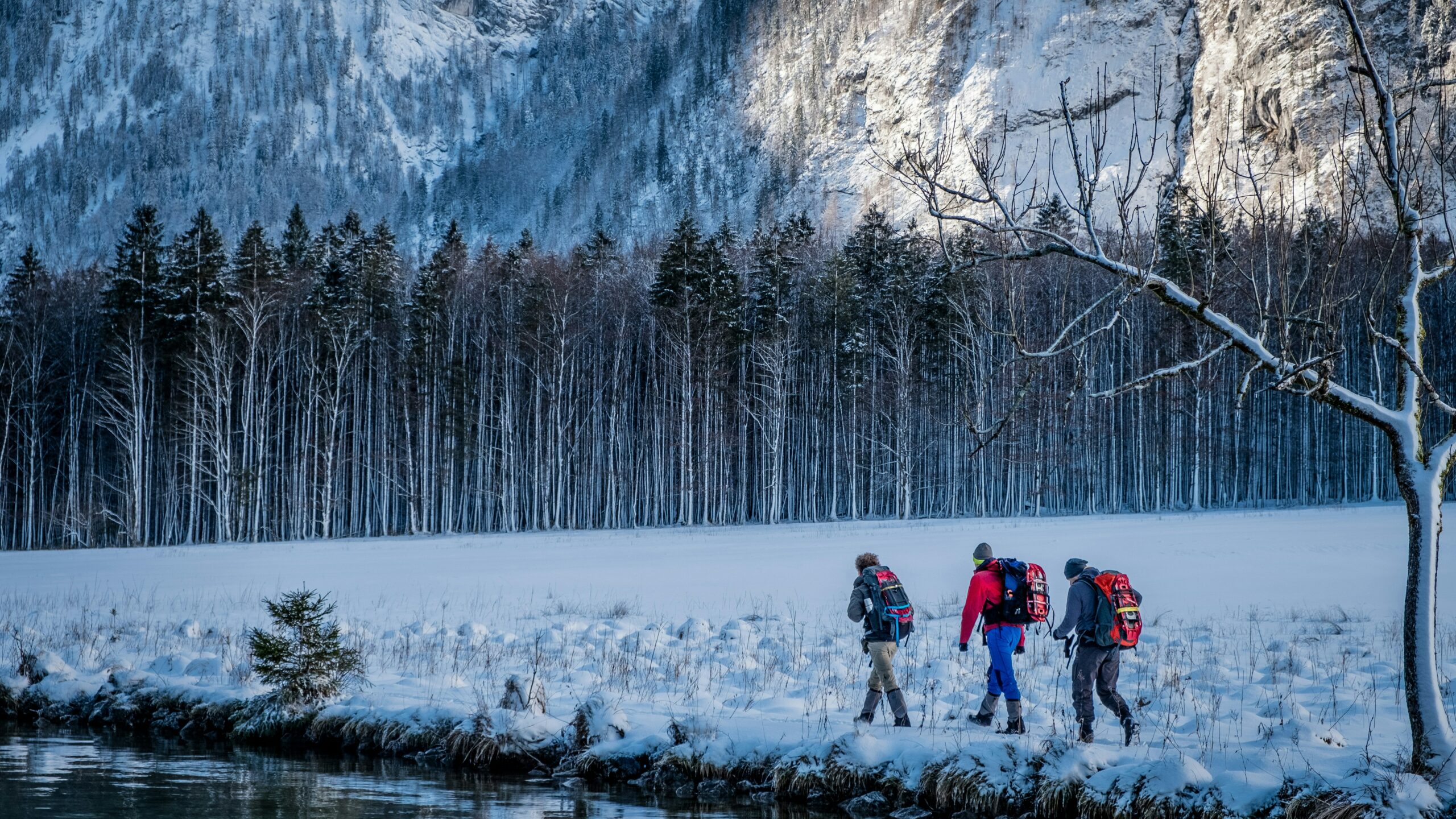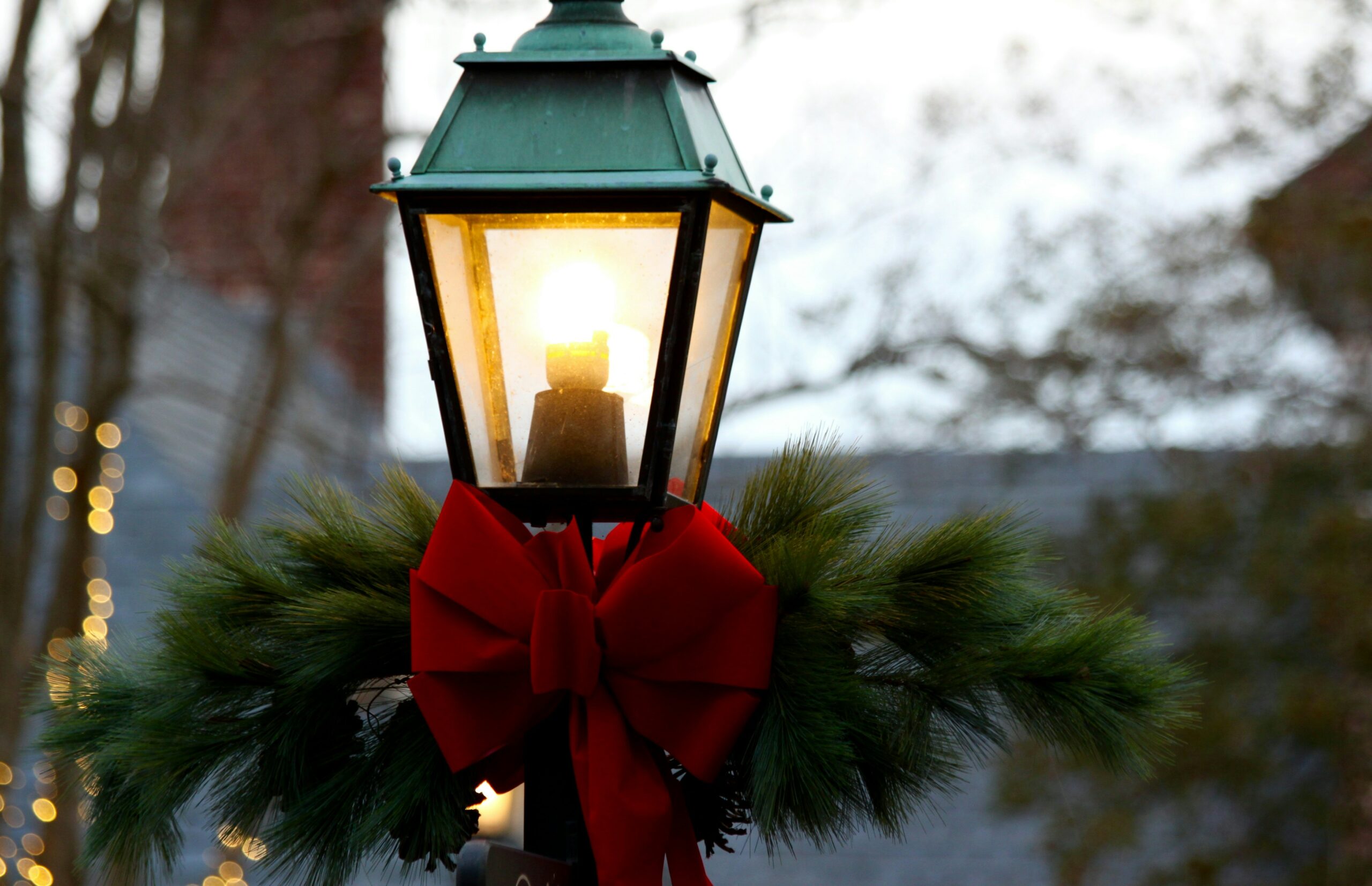82 million adults spend an estimated 28 billion dollars on gym memberships each year! WHY? There are many reasons we exercise. Some people exercise to prevent illnesses such as cardiovascular disease or osteoporosis. Others exercise for mental health and as a stress release; others do it to improve strength, flexibility, and endurance to prepare for a sport. However, the number one reason people exercise is TO LOSE WEIGHT!
When it comes to losing weight, patients have asked me a wide variety of questions over the years. However, certain questions are consistent. “What exercise is the best to burn calories?” “Even though I exercise 2-3 times per week, why can’t I lose weight?” “What is BMR?” “If I eat a Snickers bar, how much exercise do I need to do to burn it off?” “Are there any tools that I can use to help me track my calories and exercise output?”
Have you ever heard people say that they never felt better or burned more calories than they did when they ran? Well, they may be right! The following numbers are based on the average male weighing 150 pounds: running 6 miles per hour will burn 700+ calories (11-12 calories per minute); vigorously skipping with jump rope or fast cycling will do the same; vigorous walking at 4 miles per hour and moderate biking will burn 600+ calories (10 calories per minute). The 400-500 calorie club includes the following activities: slow jogging, swimming, football, basketball, baseball, tennis, skiing, and moderate walking (3.5 miles per hour). Light gardening burns more calories than golfing using a cart (250 vs. 180).
How many times have you heard people say, “It is hard for me to lose weight because I have a slow metabolism?” What does that mean? To explain this in detail you first must understand BMR. BMR is basic metabolic rate. It is the number of calories that your body requires to operate basic body functions that you don’t actively control, such as continuing to breathe, and keeping your cells and organs working each day. The BMR is influenced by age, height, gender, body fat, and fitness level. BMR is inherently different (high or low) in everyone.
While you can’t change your gender or height, you can influence some things to influence your BMR and burn more calories at rest. One, exercise for longer durations, with greater intensity and more frequently. Two, lower body fat by eating less calories, especially fat and carbohydrates in your diet. Simply, eat less calories than you burn! Three, improve your muscle/fat ratio by weight training.
Basic Metabolic Index (BMI):
BMI: < 18.5 = Underweight
BMI: 18.5 – 24.5 = Normal Weight
BMI: 25. - 29.9 = Overweight
BMI: >30. = Obestiy
For example, I am a 66-year-old male, weighing 155 pounds at 5 feet 8 inches tall with a BMI of 23.6
*Calculate your BMI by entering your gender, height and weight and find how many calories per food item at:
There are several tools available for free online to help with tracking calories and exercise visit Prevention Magazine at: www.myfooddiary.com or try the App “Lose It”
BMI Calculator – to calculate your BMI
Calorie Burner – to calculate how many calories are burned with various activities
Daily Calorie Calculator – Find how many calories are in specific foods and what you need to do to lose or gain weight.
So, remember, the number one reason we exercise is TO LOSE WEIGHT! But depending on exercise alone to lose weight is an exercise in futility. Losing weight is an intelligent and consistent combination of a balanced diet with portion control, proper nutrition, adequate exercise and activity grounded in lifestyle changes.
Mayo Clinic –December 2009
FOOD/CALORIES
MINUTES NEEDED TO BURN CALORIES AT MODERATE PACE: (Walk/Dance/Bike)
MINUTES NEEDED TO BURN CALORIES AT MODERATE PACE: (Run/Swim/Bike)
(Body Weight) (Body Weight)
125# 175# 225# 125# 175# 225#
SNICKERS BAR 65 48 37 28 20 16
(2 oz. - 271 cal)
APPLE 17 13 10 8 5 4
(Med - 72 cal)
ROOT BEER 37 27 21 16 11 9
(12 oz. – 152 cal)
SPARKLING WATER 0 0 0 0 0 0
(0 cal)
GROUND BEEF 51 38 29 22 16 12
85% lean
(3 oz. – 213 cal)
WHITE TUNA 26 19 15 11 8 6
Water Packed
(3 oz. – 109 cal)
ICE CREAM 66 48 37 29 21 16
Vanilla
(1 cup – 274 cal)
STRAWBERRIES 13 9 7 6 4 3
(1 cup – 53 cal)
GLAZED DOUGHNUT 57 42 33 25 18 14
(med – 239 cal)
TOAST 30 22 17 13 9 7
Whole-grain – 1 slice
(1 tbsp jam – 125 cal)
STARBUCKS CAFFE’ 65 48 37 28 20 16
MOCHA
2% milk – whp crm
(12 oz. – 270 cal)
COFFEE 10 7 5 4 3 2
1 tbsp half/half – 1 tbsp sugar
(12 oz. – 40 cal)

EVERY MONDAY – Read Dr. Paul J. Mackarey “Health & Exercise Forum!” via Blog
EVERY SUNDAY in "The Sunday Times" - Read Dr. Paul J. Mackarey “Health & Exercise Forum!” in hard copy
This article is not intended as a substitute for medical treatment. If you have questions related to your medical condition, please contact your family physician. For further inquires related to this topic email: drpmackarey@msn.com
Paul J. Mackarey PT, DHSc, OCS is a Doctor in Health Sciences specializing in orthopedic and sports physical therapy in Scranton and Clarks Summit. Dr. Mackarey is in private practice and is an associate professor of clinical medicine at Geisinger Commonwealth School of Medicine. For all of Dr. Mackarey's articles, visit our exercise forum!

Last week’s column was dedicated to Rosie Malloy as we discussed the importance of laughter for health and wellness. In this column, I will discuss one of the most understated benefits of exercise – mental health! Specifically, aerobic exercise (exercise that increases your heart rate for 30 minutes or more) such as walking, biking, running, swimming, hiking, elliptical & stepper machines to name a few, is the secret to “runner’s high.” This exercise euphoria is not limited to runners alone, but all who engage in aerobic exercise are more likely to experience high energy, positive attitude, and mental wellness by helping reduce depression.
Physical activity, specifically aerobic exercise, is a scientifically proven useful tool for preventing and easing depression symptoms. Studies in the British Journal of Medicine and the Journal of Exercise and Sports Science found that depression scores were significantly reduced in groups that engaged in aerobic running, jogging or walking programs, 30-45 minutes 3-5 days per week for 10-12 weeks, when compared to a control group and a psychotherapy counseling group.
Depression is the most common mental disorder and is twice as common among women as in men. Symptoms include: fatigue, sleeplessness, decreased appetite, decreased sexual interest, weight change, and constipation. Many of these symptoms are likely to bring an individual to their family physician. Unfortunately, depression is on the increase in the United States. According to the National Ambulatory Medical Care Survey, in the 1990’s, 7 million visits to a primary care physician were for the treatment of depression. 10 years later the number doubled.
According to copious amounts of scientific research, exercise improves health and wellness and reduces depression in two ways, psychologically (mentally) and physiological (physically).
SOURCES: British Journal of Medicine: Journal of Exercise and Sports Science

EVERY MONDAY – Read Dr. Paul J. Mackarey “Health & Exercise Forum!” via Blog
EVERY SUNDAY in "The Sunday Times" - Read Dr. Paul J. Mackarey “Health & Exercise Forum!” in hard copy
This article is not intended as a substitute for medical treatment. If you have questions related to your medical condition, please contact your family physician. For further inquires related to this topic email: drpmackarey@msn.comPaul J. Mackarey PT, DHSc, OCS is a Doctor in Health Sciences specializing in orthopedic and sports physical therapy in Scranton and Clarks Summit. Dr. Mackarey is in private practice and is an associate professor of clinical medicine at Geisinger Commonwealth School of Medicine. For all of Dr. Mackarey's articles, visit our exercise forum!

Last week, this column discussed the many benefits of snowshoeing as an option for those in NEPA to get outdoors and enjoy the winter. Today’s column will present another option for outdoor exercise when the weather is inclement…winter walking or running.
We live in such a beautiful environment. Each season brings its own unique beauty and winter is no different. Most will not have to abandon outdoor activities, but you must make some adjustments in equipment, clothing and food for each season and temperature changes that go with it. These tips are also appropriate for those who qualified for the Boston Marathon in the spring and will be training all winter, as well as those who enjoy walking and running throughout the winter for exercise. Consider the importance of making changes and adjustments in training as well as clothing and equipment, according to the weather and temperature.
There are running shoes specifically designed for use in wet, cold and sloppy winter conditions. These running shoes, which can also be used for walking, are considered “winterized” because they offer waterproofing, sealed seams, gaiter collars to keep out snow and slop, slip resistant fabric, anti-roll stability features, anti-microbial material and aggressive tread patterns for traction on slippery surfaces. Some shoe recommendations for both walkers and runners include:
Additionally, I am a strong proponent of walking with trekking poles for improved balance and safety when brisk walking in winter conditions. They are light weight, adjustable, and collapsible. Some examples are: Trekology Trek Z 2.0 – 45. and REI Co-op Trailmade $79.00. Also, an old pair of ski poles will work just fine.
Over the past several years great strides have been made on understanding the effects of extreme temperatures on performance. Current wisdom from the University of Otago in New Zealand has found:
Visit your doctor regularly and listen to your body.

EVERY MONDAY – Read Dr. Paul J. Mackarey “Health & Exercise Forum!” via Blog
EVERY SUNDAY in "The Sunday Times" - Read Dr. Paul J. Mackarey “Health & Exercise Forum!” in hard copy
This article is not intended as a substitute for medical treatment. If you have questions related to your medical condition, please contact your family physician. For further inquires related to this topic email: drpmackarey@msn.com
Paul J. Mackarey PT, DHSc, OCS is a Doctor in Health Sciences specializing in orthopedic and sports physical therapy in Scranton and Clarks Summit. Dr. Mackarey is in private practice and is an associate professor of clinical medicine at Geisinger Commonwealth School of Medicine. For all of Dr. Mackarey's articles, visit our exercise forum!

When I was a young boy growing up in NEPA, one of my favorite winter things was to walk in the freshly fallen snow. I loved the feel of fresh crisp air through my lungs, the mesmerizing sparkle of snow falling in the moonlight, the peaceful sound of silence as pedestrian and motor traffic came to a halt and only thing audible was the muffled sound of my boots as they crunched the snow beneath… for me, if it is sizzling hot in hell, it snows in heaven! Well, I am happy to share with you, as I struggle to hold on tightly to my “inner child,” I am as excited and inspired by a walk in the snow today, as I was 45 years ago. It is my hope, that this column will inspire my readers to consider a beautiful walk in the snow to rediscover their “inner child.”
While there are many options and opportunities available to enjoy winter in NEPA such as downhill skiing, cross country skiing, winter mountain biking, ice skating, and sled riding, none is as easy and natural as snowshoeing.
The advantages are many:
As a result, the popularity of snowshoeing is growing rapidly. According to the Outdoor Industry Association, the number of snowshoe participants have increased by 7.5% to 4.1 million in 2011 and 40.7% overall since 2008.
History (Raquettes GV, Quebec, Canada info@gvsnowshoes.com)
While the advent of the wheel is estimated to have been approximately 3,500 BC, the snowshoe had already been established and developed by 6,000 BC according to Stone Age engravings found in Norway. The snowshoe was an instrumental tool used by early humans to cross the Bering Strait into North America.
Some historians feel the snowshoe developed, like many great inventions, as an imitation of nature. For example, animals such as the snowshoe hare use expansive feet to increase their surface area, limit sinking and move more efficiently through the deep snow. Hardwood frames with leather webbed lacing comprised the early snowshoes used by fur trappers, traders, and Native Americans. More recently, materials have advanced and light but durable aluminum frames comprise snowshoes that are used by park rangers and winter recreation enthusiasts.
Like all sporting equipment, you usually get what you pay for. Snowshoes range in cost from $50.00 to $300.00. Most people will be fine in a good pair for under $100.00. LL Bean and Dick’s Sporting Goods and Sierra Store offer several affordable options.
Some equipment examples are Tubbs Wayfinder Flat - $199 and Redfeather - $82.00. Ski poles are recommended for efficiency when snowshoeing. Traditional ski poles or adjustable hiking poles can be used. Warm and supportive winter boots or hiking shoes are essential.
Now you are ready to go! The next time a snow storm dumps 8 – 10 inches on NEPA, get outside BEFORE the streets are plowed. Put on you warm winter boots, strap them into the bindings of your new snowshoes and walk out your front door and explore your neighborhood as you have never seen it before...white, clean, glistening, crisp and quiet. Let your mind wander, enjoy winter and rediscover your inner child!
Next Week: Part II of II...Winter Walking and Running
Visit your doctor regularly and listen to your body.

EVERY MONDAY – Read Dr. Paul J. Mackarey “Health & Exercise Forum!” via Blog
EVERY SUNDAY in "The Sunday Times" - Read Dr. Paul J. Mackarey “Health & Exercise Forum!” in hard copy
This article is not intended as a substitute for medical treatment. If you have questions related to your medical condition, please contact your family physician. For further inquires related to this topic email: drpmackarey@msn.com
Paul J. Mackarey PT, DHSc, OCS is a Doctor in Health Sciences specializing in orthopedic and sports physical therapy in Scranton and Clarks Summit. Dr. Mackarey is in private practice and is an associate professor of clinical medicine at Geisinger Commonwealth School of Medicine. For all of Dr. Mackarey's articles, visit our exercise forum!

The number one New Year’s Resolution in the United States is to lose weight. A close second is to gain control over one’s life. One of the best ways to lose weight is thought diet and exercise. It can also be a very effective method to begin taking control of one’s life. This is especially true for those suffering from stress, anxiety and depression. This year make your New Year’s Resolution to “Get a Runner’s High on Life!”
Specifically, aerobic exercise (exercise that increases your heart rate for 30 minutes or more) such as walking, biking, running, swimming, hiking, elliptical & stepper machines to name a few, is the secret to “runner’s high.” This exercise euphoria is not limited to runners alone, but all who engage in aerobic exercise are more likely to experience high energy, positive attitude, and mental wellness – not to mention burn calories.
Physical activity, specifically aerobic exercise, while well known for its importance to one’s physical well-being has also been scientifically proven valuable for preventing and easing stress, anxiety and depression. Studies have found improvement in mental health for groups that engaged in aerobic running, jogging or walking programs, 30-45 minutes 3-5 days per week for 10-12 weeks when compared to a control group and a group in counseling.

EVERY MONDAY – Read Dr. Paul J. Mackarey “Health & Exercise Forum!” via Blog
EVERY SUNDAY in "The Sunday Times" - Read Dr. Paul J. Mackarey “Health & Exercise Forum!” in hard copy
This article is not intended as a substitute for medical treatment. If you have questions related to your medical condition, please contact your family physician. For further inquires related to this topic email: drpmackarey@msn.comPaul J. Mackarey PT, DHSc, OCS is a Doctor in Health Sciences specializing in orthopedic and sports physical therapy in Scranton and Clarks Summit. Dr. Mackarey is in private practice and is an associate professor of clinical medicine at Geisinger Commonwealth School of Medicine. For all of Dr. Mackarey's articles, visit our exercise forum!

According to American Association of Retired Persons (AARP), those 50 years old and older are seniors! By this definition, as hard as it is to admit, I am well into senior status and as one, I offer holiday health tips for seniors.
Overindulgence during the holidays causes many seniors to make New Year's resolutions related to diet and exercise. But, this year, I propose that seniors incorporate healthy habits during the holiday season, and you may find that your resolutions are not as hard to keep.

EVERY MONDAY – Read Dr. Paul J. Mackarey “Health & Exercise Forum!” via Blog
EVERY SUNDAY in "The Sunday Times" - Read Dr. Paul J. Mackarey “Health & Exercise Forum!” in hard copy
This article is not intended as a substitute for medical treatment. If you have questions related to your medical condition, please contact your family physician. For further inquires related to this topic email: drpmackarey@msn.com
Paul J. Mackarey PT, DHSc, OCS is a Doctor in Health Sciences specializing in orthopedic and sports physical therapy in Scranton and Clarks Summit. Dr. Mackarey is in private practice and is an associate professor of clinical medicine at Geisinger Commonwealth School of Medicine. For all of Dr. Mackarey's articles, visit our exercise forum!

While I normally do not address the topic of shoveling snow until January, considering recent weather events, I thought it might be valuable to present it sooner. Much has been written about the dangers of snow shoveling for your heart. However, while not fatal, low back pain is the most common injury sustained while shoveling snow. Heart attacks are also more common following wet and heavy snow.
Snow shoveling can place excessive stress on the structures of the spine. When overloaded and overstressed, these structures fail to support the spine properly. The lower back is at great risk of injury when bending forward, twisting, lifting a load, and lifting a load with a long lever. When all these factors are combined simultaneously, as in snow shoveling, the lower back is destined to fail. Low back pain from muscle strain or a herniated disc is very common following excessive snow shoveling.
Sources: The Colorado Comprehensive Spine Institute; American Academy of Orthopaedic Surgeons
Visit your doctor regularly and listen to your body.

EVERY MONDAY – Read Dr. Paul J. Mackarey “Health & Exercise Forum!” via Blog
EVERY SUNDAY in "The Sunday Times" - Read Dr. Paul J. Mackarey “Health & Exercise Forum!” in hard copy
This article is not intended as a substitute for medical treatment. If you have questions related to your medical condition, please contact your family physician. For further inquires related to this topic email: drpmackarey@msn.com
Paul J. Mackarey PT, DHSc, OCS is a Doctor in Health Sciences specializing in orthopedic and sports physical therapy in Scranton and Clarks Summit. Dr. Mackarey is in private practice and is an associate professor of clinical medicine at Geisinger Commonwealth School of Medicine. For all of Dr. Mackarey's articles, visit our exercise forum!

Recently, two patients asked me when I thought it would be safe for them to return to their exercise programs after abdominal surgery. She stated that she was not sure how to properly and safely implement or return to her program.
This column will attempt to ensure a safe return to activity and exercise following general surgery such as gall bladder, appendix, hernia, etc. The post-operative patient has many questions: When is it safe to begin an exercise program? How do I begin? What is the best exercise? Which exercises are best? How do I know if the activity is too intense or not intense enough? Are there safe guidelines?
Before you begin, discuss your intention to exercise with your surgeon and primary care physician. Get medical clearance to make sure you can exercise safely. With the exception of short daily walks, don’t be disappointed if your surgeon requires you to wait at least until your 6 week post-op check-up to begin exercise.
While a 60 minute workout would be the long term goal, begin slowly at 15-20-30 minutes and add a few minutes each week. Make time to warm up and cool down.
Warm-up 5-10 minutes
Strength Training 10-15-20 minutes
Aerobic 10-15-20 minutes
Cool down 5-10 minutes
How to Monitor Your Exercise Program:
First, determine your resting heart rate by taking your HR (pulse) using your index finger on the thumb side of your wrist for 30 seconds and multiply it by two. 80 beats per minute is considered a normal HR but it varies. This is a good baseline to use as a goal to return to upon completion of your workout. For example, your HR may increase to 150 during exercise, but you want to return to your pre exercise HR (80) within 3-5 minutes after you complete the workout.
For those who are healthy, calculating your target heart rate (HR) is an easy and useful tool to monitor exercise intensity.
220 – Your Age = Maximum Heart Rate
EXAMPLE for a 45 year old: 220 – 45 = 175 beats per minute should not be exceeded during exercise.
For those concerned about calories expended during exercise.
NOTE: Keep the level at a light/moderate level for the first four to six weeks and advance to the moderate/heavy at week six. The Very Heavy Level may not be appropriate for 12 weeks post op is for those who have a reasonable fitness level and exercise 4-5 days per week.
Example of Data Found on Fitness Equipment
Remember, this is only accurate if you program your correct height, weight and age.
Level kCal/min MET
Light 2 - 4.9 1.6 – 3.9
Moderate 5 - 7.4 4 – 5.9
Heavy 7.5 - 9.9 6 - 7.9
Very Heavy 10 - 12.4 8 – 9.9
Always secure physician approval before engaging in an exercise program.
If the patient is on beta blockers (Atenolol, Bisoprolol, etc), it is important to use the Borg Rating of Perceived Exertion Scale (RPE) scale to determine safe exercise stress since exercise will not increase HR as expected:
0 - Nothing at all
1 - Very light
2 - Light
3 - Moderate
4 - Somewhat intense
5 - Intense (heavy)
6
7 - Very intense
8
9 - Very, very intense
10 - Maximum Intensity
NOTE: Keep the RPE at 2-3 the first 6 weeks post op and advance to level 3-4 at 8-12 weeks post op. Levels 5-6-7 are for those with a reasonable fitness level and exercise 4-5 days per week. The advanced levels should not be attained until 2-3 months of exercise and 3-4 months post op.
MEDICAL CONTRIBUTOR: Timothy Farrell, MD, is a general surgeon at GCMC.

EVERY MONDAY – Read Dr. Paul J. Mackarey “Health & Exercise Forum!” via Blog
EVERY SUNDAY in "The Sunday Times" - Read Dr. Paul J. Mackarey “Health & Exercise Forum!” in hard copy
This article is not intended as a substitute for medical treatment. If you have questions related to your medical condition, please contact your family physician. For further inquires related to this topic email: drpmackarey@msn.com
Paul J. Mackarey PT, DHSc, OCS is a Doctor in Health Sciences specializing in orthopedic and sports physical therapy in Scranton and Clarks Summit. Dr. Mackarey is in private practice and is an associate professor of clinical medicine at Geisinger Commonwealth School of Medicine. For all of Dr. Mackarey's articles, visit our exercise forum!

Fall has arrived in NEPA and walking is a great way to enjoy the fall foliage. Moreover, a new study has found that walking can reduce lower back pain. Researchers in Australia followed more than 700 adults who had a recent onset of lower back pain (and were able to bear full weight without associated leg symptoms) and enrolled them in a walking program under the supervision of a physical therapist. One group walked for 30 minutes, 3-5 times per week and the control group remained inactive. Both groups were followed for more than three years and discovered that the inactive control group was twice as likely to suffer from repeated flare-ups of lower back pain when compared to the walking group.
It is good news for those who enjoy walking, however, for many who have not maintained an active lifestyle or have health issues, it is challenging to know where to begin. Also, beginning without a good plan can lead to injury and leave you discouraged. For example, those overweight and de-conditioned should not start a walking program too aggressively. Walking at a fast pace and long distance without gradually weaning yourself into it will most likely lead to problems.
There is probably nothing more natural to human beings than walking. Ever since Australopithecus, an early hominin (human ancestor) who evolved in Southern and Eastern Africa between 4 and 2 million years ago, our ancestors took their first steps as committed bipeds. With free hands, humans advanced in hunting, gathering, making tools etc. while modern man uses walking as, not only a form of locomotion, but also as a form of exercise and fitness. It is natural, easy and free...no equipment or fitness club membership required!
Walking to reduce or control lower back pain is only one of many important reasons to begin a program. According to the American Heart Association, walking as little as 30 minutes a day can provide the following benefits:
Anything is better than nothing! However, for most healthy adults, the Department of Health and Human Services recommends at least 150 minutes of moderate aerobic activity or 75 minutes of vigorous aerobic activity, or an equivalent combination of moderate and vigorous aerobic activity. The guidelines suggest that you spread out this exercise during the course of a week. Also aim to do strength training exercises of all major muscle groups at least two times a week.
As a general goal, aim for at least 30 minutes of physical activity a day. If you can't set aside that much time, try several short sessions of activity throughout the day (3 ten or 2 fifteen-minute sessions). Even small amounts of physical activity are helpful, and accumulated activity throughout the day adds up to provide health benefit.
Remember it's OK to start slowly — especially if you haven't been exercising regularly. You might start with five minutes a day the first week, and then increase your time by five minutes each week until you reach at least 30 minutes.
For even more health benefits, aim for at least 60 minutes of physical activity most days of the week. Once you are ready for a challenge, add hills, increase speed and distance.
Keeping a record of how many steps you take, the distance you walk and how long it takes can help you see where you started from and serve as a source of inspiration. Record these numbers in a walking journal or log them in a spreadsheet or a physical activity app. Another option is to use an electronic device such as a smart watch, pedometer or fitness tracker to calculate steps and distance.
Make walking part of your daily routine. Pick a time that works best for you. Some prefer early morning, others lunchtime or after work. Enter it in your smart phone with a reminder and get to it!
Studies show that compliance with an exercise program is significantly improved when an exercise buddy is part of the equation. It is hard to let someone down or break plans when you commit to someone. Keep in mind that your exercise buddy can also include your dog!

Like everything, there is a right way of doing something, even walking. For efficiency and safety, walking with proper stride is important. A fitness stride requires good posture and purposeful movements. Ideally, here's how you'll look when you're walking:
Sources : Sapiens.org; WebMD; Mayo Clinic, “Health & Science New”
Visit your doctor regularly and listen to your body

EVERY MONDAY – Read Dr. Paul J. Mackarey “Health & Exercise Forum!” via Blog
EVERY SUNDAY in "The Sunday Times" - Read Dr. Paul J. Mackarey “Health & Exercise Forum!” in hard copy
This article is not intended as a substitute for medical treatment. If you have questions related to your medical condition, please contact your family physician. For further inquires related to this topic email: drpmackarey@msn.com
Paul J. Mackarey PT, DHSc, OCS is a Doctor in Health Sciences specializing in orthopedic and sports physical therapy in Scranton and Clarks Summit. Dr. Mackarey is in private practice and is an associate professor of clinical medicine at Geisinger Commonwealth School of Medicine. For all of Dr. Mackarey's articles, visit our exercise forum!

Age-related changes to your body are normal and expected. For example, loss of muscle tone, stiffness in joints, and loss of balance. With effort, some of these changes can be retarded and managed with stretching, strengthening and balance exercises. The brain is no different…it can slow down and lead to memory lapses. However, for most of us, it too can be managed and with a little effort, be kept sharp and clear.
Many experts feel that exercise is the best method to maintain not only physical health but mental health. Regular exercise can prevent the things that contribute to memory loss with age such as; diabetes, high blood pressure, high cholesterol, obesity and stroke.
Specifically, aerobic exercise may be most beneficial. Aerobic exercise is any type of sustained exercise that strengthens the heart and lungs to improve the body’s use of oxygen. This may include running/jogging, brisk walking, cycling, swimming, rowing, and the use of a treadmill, elliptical, stepper or similar device, at light to moderate intensity which requires the use of oxygen to adequately meet the oxygen demands of the body for an extended period of time. The generally accepted time and frequency is at least 30 minute sessions performed three or more times per week. Two 15 minute or three 10 minute sessions are also valuable. For those with back, hip, knee and other lower body pain, consider low-impact or partial weight-bearing activities such as a recumbent bike or stepper or upright bike instead of a treadmill.
The benefits of a healthy diet are well-documented. Specifically, a Mediterranean-style diet comes highly recommended. It focuses on plenty of fruits and vegetables with fish instead of red meat and olive oil instead of butter. Researchers found people who closely adhered to a Mediterranean diet were nearly 20% less likely to have thinking and memory problems.
Exercise your brain just as you do your body. Make time each day to challenge your brain. Learn something new to keep your mind sharp. Play cards, read a book, do crossword puzzles or other word games, take a class or learn play a musical instrument.
Human beings are social animals and in the right setting, we stimulate and challenge each other. Join a book club, fitness center, or a community center. Consider volunteering, taking an art or photography class. Social interaction can prevent isolation which can lead to depression and depression is associated with dementia.
Without adequate sleep, attention and concentration is compromised. Studies show that those who have normal restful sleep outperform those who are restless and sleep deprived. Some tips for better sleep are: avoid big meals before bed, keep a consistent sleep and wake up time, avoid nicotine, caffeine and alcohol close to bedtime. “
Consider an afternoon “power nap!” Recent studies show that an afternoon nap was rejuvenating to the mind and body. Participants improved on mental skills such as memory, calculation, orientation and attention.
Cortisol is the hormone associated with stress. Recent studies have found that elevated cortisol levels were associated with poorer overall cognitive functioning, including memory, language, and processing speed.
Try yoga, massage, breathing techniques to relax. Progressive muscle relaxation (PMR) techniques can be very effective…try it on YouTube!
Smoking is clearly one of the worst things you can do to your body AND MIND! Smoking can lead to early memory lose in part due to small strokes in the brain. Do whatever it takes to quit; nicotine replacement, medication, or counseling.
There are many medical conditions and medications associated with memory loss. Regular medical check-ups can prevent, diagnose and treat some of these conditions such as; depression, diabetes, thyroid disease, vitamin deficiencies, and drug interactions or side effects. For example, sleep aid and anxiety drugs associate with memory loss.
In addition to common tricks such as word association, sticky notes, use your smart phone for appointments and reminders. If you don’t know how to use a smart phone, it is time to learn something new…and that is a healthy brain activity!
SOURCES: WebMD; Harvard Health

EVERY MONDAY – Read Dr. Paul J. Mackarey “Health & Exercise Forum!” via Blog
EVERY SUNDAY in "The Sunday Times" - Read Dr. Paul J. Mackarey “Health & Exercise Forum!” in hard copy
This article is not intended as a substitute for medical treatment. If you have questions related to your medical condition, please contact your family physician. For further inquires related to this topic email: drpmackarey@msn.com
Paul J. Mackarey PT, DHSc, OCS is a Doctor in Health Sciences specializing in orthopedic and sports physical therapy in Scranton and Clarks Summit. Dr. Mackarey is in private practice and is an associate professor of clinical medicine at Geisinger Commonwealth School of Medicine. For all of Dr. Mackarey's articles, visit our exercise forum!
